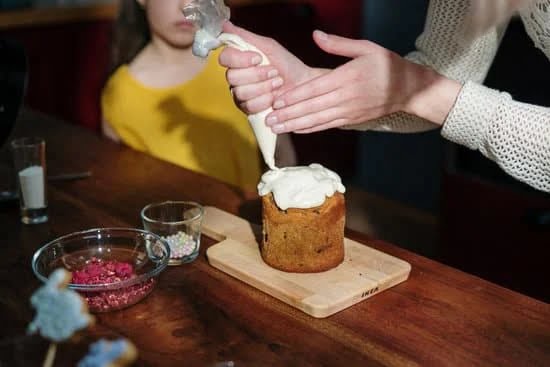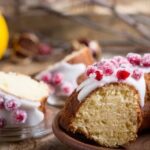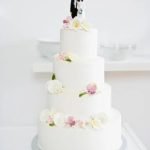Decorating a cake with a piping bag is an essential technique for anyone looking to create stunning and professional-looking cakes. Whether you are a beginner or an experienced baker, using a piping bag can take your cake decorating skills to the next level. This introduction will explore why this technique is perfect for achieving beautiful cake designs.
When it comes to creating visually appealing cakes, nothing quite compares to the artistry that can be achieved with a piping bag. The versatility of this tool allows bakers to create intricate designs, borders, and patterns that are simply not possible with other methods. From elegant floral arrangements to fun and whimsical characters, the possibilities are endless. With just a little practice and the right techniques, anyone can become a master at creating breathtaking designs with their piping bag.
Not only does using a piping bag allow for creativity and precision in decorating, but it also provides professional-looking results. The clean lines and smooth finishes that can be achieved with this technique are what set apart beautifully decorated cakes from amateur creations. By mastering the art of piping, you can elevate your cake decorating game and impress family, friends, and customers alike.
In the following sections of this article, we will delve into the essential tools and materials needed for cake decorating with a piping bag, explore various tips and techniques, discuss troubleshooting tips to avoid common mistakes, as well as provide guidance on adding colors and flavors to your decorations. Additionally, we’ll offer advice on how to showcase your finished masterpiece by providing tips for photographing and displaying your beautifully decorated cake.
So let’s dive in together as we uncover the secrets behind achieving picture-perfect cake decorations with a piping bag.
Getting Started
To get started with cake decorating using a piping bag, there are several essential tools and materials that you will need. These items are not only important for achieving professional-looking results, but they also make the process much easier and more enjoyable. Here is a list of the must-have tools and materials for cake decorating with a piping bag:
- Piping Bag: The most important tool you’ll need is, of course, a piping bag. Piping bags come in different sizes and materials, such as disposable plastic or reusable fabric. Choose one that feels comfortable in your hand and suits your preferences.
- Piping Tips: Piping tips are interchangeable attachments that fit onto the end of the piping bag to create various decorative effects. There is a wide variety of tips available, each producing different shapes and patterns. Some common tips include round tips for basic outlines or lettering, star tips for rosettes or borders, and petal tips for creating flower petals.
- Couplers: A coupler is a two-part device that allows you to easily change piping tips without emptying the icing from the bag. It consists of two pieces – a base that fits inside the piping bag and a ring that secures the tip in place.
- Icing Scraper/Smoother: An icing scraper or smoother is used to level out frosting on the cake’s surface before applying decorations. It helps create a smooth canvas for more intricate designs.
- Offset Spatula: An offset spatula is useful for spreading and smoothing frosting on the sides of the cake. Its angled handle provides better control and prevents your hand from getting in the way while working.
- Gel Food Coloring: Gel food coloring is preferred over liquid ones because it doesn’t thin out buttercream frosting as much. They come in various vibrant colors and can be mixed together to create custom shades for your design.
- Palette Knife: A palette knife is a versatile tool for mixing colors, scraping off mistakes, or even applying frosting to smaller details. Its flat and flexible blade allows for precise control.
- Flower Nail: If you plan to pipe intricate flowers or roses, a flower nail is indispensable. It’s a metal nail with a flat head on which you build the layers of petals.
By having these essential tools and materials readily available, you’ll be well-prepared to decorate cakes using a piping bag. Remember to choose good quality products that feel comfortable in your hands and experiment with different tips and techniques for endless decorative possibilities.
Understanding Different Tips and Techniques
When it comes to cake decorating with a piping bag, one of the most important things to understand is the different tips and techniques that can be used to achieve various decorative effects. With the right tip and proper technique, you can create stunning designs, patterns, and borders that will elevate your cake to a whole new level.
There are a wide variety of piping bag tips available on the market, each designed for different purposes. Some common tips include round tips, star tips, leaf tips, petal tips, and basketweave tips. Round tips are perfect for creating dots or writing on a cake, while star tips are great for creating rosettes or filling in large areas with texture.
Leaf tips are used for creating realistic leaves or other foliage-like decorations, while petal tips are ideal for making flowers. Basketweave tips can be used to create textured patterns that resemble woven baskets.
To achieve different decorative effects with a piping bag, it’s important to learn the proper technique for using each tip. For example, when using a star tip, you can achieve different effects by varying the pressure applied to the piping bag and the speed at which you move your hand. Applying more pressure will result in thicker lines or more pronounced texture, while lighter pressure will create thinner lines or softer texture.
| Piping Bag Tip | Decorative Effect |
|---|---|
| Round Tip | Dots or Writing |
| Star Tip | Rosettes or Texture Fillings |
| Leaf Tip | Realistic Leaves or Foliage-like decorations |
| Petal Tip | Flowers |
| Basketweave Tip | Textured patterns resembling woven baskets |
Understanding the different tips and techniques is essential for achieving the desired decorative effects when using a piping bag. With practice and experimentation, you can develop your skills and create beautifully decorated cakes that will impress your friends and family. So, don’t be afraid to explore different tips and techniques – let your creativity flow as you master the art of cake decorating with a piping bag.
Preparing the Cake
Leveling the Cake
Before you begin piping intricate designs onto your cake, it’s crucial to ensure that the cake has a level surface. Leveling the cake not only makes it easier to work with but also helps in achieving a professional-looking finished product.
To level a cake, start by placing it on a flat surface and using a long serrated knife or cake leveler to carefully remove any domed or uneven portions from the top of the cake. Be gentle and take your time to ensure an even cut.
Crumb Coating
After leveling your cake, it’s essential to apply a crumb coat before piping. A crumb coat is a thin layer of frosting that acts as a base and helps seal in crumbs, creating a smoother final appearance. To apply the crumb coat, start by spreading a thin layer of frosting over the entire surface of the cake using an offset spatula.
Make sure to cover all sides and edges thoroughly. Once applied, refrigerate the cake for about 15 minutes to allow the crumb coat to set.
Base Layer of Frosting
Once the crumb coat is set, it’s time to apply a thicker base layer of frosting. This layer will provide structure and support for your piped decorations. Using an offset spatula or icing smoother, evenly spread a generous amount of frosting over the entire cake, making sure to cover any gaps or uneven spots left from the crumb coating process. Smooth out the frosting as much as possible for a sleek finish.
If you plan on using different colors for your piped decorations, now is also the time to divide your remaining frosting into separate bowls and add food coloring accordingly.
By leveling your cake, applying a crumb coat, and adding a solid base layer of frosting, you are setting yourself up for success when it comes to piping designs onto your cake. These steps create a sturdy surface and ensure that the final result is both visually appealing and delicious.
Piping Bag Basics
Decorating a cake with a piping bag is not as daunting as it may seem. With a little practice and the right techniques, you can create beautifully decorated cakes that will impress your friends and family. In this section, we will guide you through the basics of using a piping bag, including how to fill it, hold it properly, and control the flow of frosting for the best results.
Filling the Piping Bag
Before you can start decorating your cake, you need to fill your piping bag with frosting or icing. Here are some tips for filling the piping bag:
- Choose a piping tip suitable for the design you want to achieve and attach it securely to the piping bag.
- Place the piping bag in a tall glass or container, folding the top half of the bag over the rim of the container. This makes it easier to fill without making a mess.
- Scoop your desired frosting into the bag using a spatula or spoon. It’s important not to overfill it since this can cause frosting to seep out from the top.
- Once filled, gently lift and twist the top of the bag to create pressure and secure the frosting inside.
Holding and Controlling the Piping Bag
Holding and controlling the piping bag properly is essential for smooth and precise decorations. Here are some key tips:
- Hold the piping bag firmly but gently near its base with your dominant hand.
- Use your other hand to guide or support as needed, depending on the complexity of your design.
- Apply even pressure using your dominant hand while using gentle and consistent movements to control how much frosting comes out.
- Practice with different levels of pressure and movement speed until you find what works best for you.
Remember that practice makes perfect when it comes to holding and controlling a piping bag. Don’t be discouraged if your first attempts aren’t flawless – keep practicing, and soon you’ll be creating bakery-worthy designs.
Troubleshooting Tips
Sometimes, even with the best techniques, things can go wrong. Here are some common issues you may encounter and how to troubleshoot them:
- Frosting is too loose or runny: If your frosting is too soft or runny to hold its shape, you can try adding more powdered sugar to thicken it. You can also chill the frosting in the refrigerator for a while before using it.
- Blockages in the piping tip: If your piping tip gets clogged during decorating, gently remove it from the piping bag and clean out any blockages. Be careful not to apply too much pressure when squeezing the bag to avoid bursting it.
- Inconsistent shapes or sizes: If your piped shapes or borders vary in size or shape, it may be because you’re applying inconsistent pressure on the piping bag. Try practicing with consistent pressure and speed to achieve uniform decorations.
By mastering these basic techniques of filling, holding, and controlling a piping bag, you’ll be well on your way to creating stunning cake decorations. With practice and patience, you’ll gain confidence in your ability to create intricate designs and patterns that will wow everyone who sees your beautifully decorated cakes.
Mastering the Art of Piping
Once you’ve familiarized yourself with the basics of using a piping bag, it’s time to take your cake decorating skills to the next level by mastering the art of piping. This section will provide you with a step-by-step guide to creating intricate designs, borders, and patterns that will truly make your cake stand out.
- Start by selecting the appropriate piping tip for your desired design. Different tips create different effects, so experiment with various shapes and sizes to find the ones that achieve the look you want. Some popular types of tips include round tips for writing or outlining, star tips for creating rosettes or shells, and petal tips for delicate flower decorations.
- Before you begin piping, practice your technique on a separate surface such as a piece of parchment paper or a silicone mat. This allows you to get comfortable with the pressure needed to control the flow of frosting and helps ensure smoother lines and shapes on your cake.
- When it comes to creating intricate designs, it’s all about building up layers. Start by outlining your design using a thin consistency frosting or royal icing. Once you have your outline in place, fill in larger areas using a thicker consistency frosting. This method adds depth and dimension to your decorations while also preventing them from spreading or smudging.
- Don’t be afraid to get creative with different types of patterns and textures. For example, you can achieve a basketweave effect by using two contrasting colors of frosting and crisscrossing lines over each other. You can also add dots or small details using a small round tip or create ruffles by dragging a star tip along in waves.
- Remember that practice makes perfect when it comes to piping intricate designs. Don’t be discouraged if your first attempts don’t turn out exactly as expected. Keep practicing and experimenting with different techniques, and soon enough you’ll be creating stunning and professional-looking designs.
By following this step-by-step guide, you can master the art of piping and create intricately designed cakes that will impress your friends, family, and clients. Whether you’re creating beautiful floral patterns or elegant borders, the piping bag is a versatile tool that allows for endless possibilities in cake decorating. So grab your piping bag, get creative, and let your imagination run wild with frosting.
Adding Color and Flavor
One of the most exciting aspects of decorating cakes with a piping bag is the opportunity to experiment with different frosting colors and flavors. Adding color and flavor to your cake can truly elevate the overall design and make it even more visually appealing. In this section, we will explore some tips and techniques for achieving vibrant colors and delicious flavors in your decorated cakes.
When it comes to adding color to your frosting, there are a few options to consider. One popular method is using food coloring gel or paste. These concentrated forms of food coloring provide vibrant and intense colors that won’t alter the consistency of your frosting.
It’s important to start with a small amount of color at first and gradually add more until you achieve the desired shade. Remember that it’s easier to add more color than to lighten it, so take your time.
Another way to add color is by using natural ingredients such as fruit juices or purees. For example, you can incorporate fresh strawberry puree into your buttercream frosting for a soft pink hue, or blend in some matcha powder for a beautiful green shade. Using natural ingredients not only adds color but also imparts subtle flavors that complement your cake.
In addition to adding color, you can also experiment with different flavorings in your frostings. Vanilla extract is a classic choice, but don’t be afraid to try other extracts such as almond, lemon, or coconut. You can also play around with flavored oils like peppermint or orange for an extra kick of flavor. Just remember to start with a small amount of flavoring and taste as you go, as some extracts can be quite potent.
Overall, adding color and flavor through frosting is an excellent way to enhance your decorated cake and make it truly irresistible. Whether you choose vibrant shades or subtle hues, experimenting with different colors and flavors will take your cake decorating skills to new heights. So don’t be afraid to get creative and let your imagination run wild.
Troubleshooting and Tips
Decorating a cake with a piping bag can be a fun and creative experience, but it’s important to know some common mistakes to avoid in order to achieve picture-perfect cake decorations. One of the most common mistakes is not properly preparing the piping bag.
It’s essential to make sure that the tip is securely attached to the bag and that there are no air bubbles trapped inside. If there are air bubbles, it can cause uneven frosting or even burst the bag during decorating.
Another mistake to avoid is using too much pressure when squeezing the piping bag. Applying too much pressure can create overly thick and heavy lines or cause the frosting to burst out in unwanted areas. It’s important to apply steady and even pressure while maintaining control over the bag.
One of the biggest challenges with decorating cakes using a piping bag is achieving smooth and consistent lines. A common mistake is moving the piping bag too quickly or jerking it while applying frosting, resulting in uneven lines. To achieve clean lines, it’s important to move at a slow and steady pace while gently squeezing out frosting.
To enhance your cake decorating skills with a piping bag further, here are some proven tips:
- Practice makes perfect: Before attempting intricate designs on your final cake, practice on a piece of parchment paper or wax paper first. This allows you to get comfortable with different techniques and experiment without any pressure.
- Keep your hands cool: Warm hands can melt the buttercream or frosting, making it difficult to work with. To keep your hands cool, you can run them under cold water before starting or wear food-safe gloves.
- Use guides for consistency: If you’re looking for even spacing between designs or borders, consider using guide lines or stencils as references. These can help you achieve precise measurements and maintain consistency throughout your decoration.
By avoiding common mistakes and following these tips, you’ll be well on your way to achieving picture-perfect cake decorations with a piping bag. With practice and patience, your cake creations will be admired by all.
Showcasing Your Finished Masterpiece
Once you have put in all the hard work and effort into decorating your cake with a piping bag, it’s time to showcase your finished masterpiece. After all, what better way to appreciate your creation than by capturing its beauty in a photograph? In this section, we will discuss some tips for photographing and displaying your beautifully decorated cake.
When it comes to photographing your cake, lighting is key. Natural light is always best, so try to find a well-lit area near a window or set up your cake outdoors on a bright day. Avoid using direct overhead lighting as it can create harsh shadows. Instead, consider using diffused lighting or placing a white sheet or reflector to bounce light onto the cake and minimize shadows.
Composition is another important aspect of cake photography. Consider the background and props that you use when styling your shot. A clean and simple background will help keep the focus on the cake itself. You can use complementary colors or textures in the background to enhance the overall aesthetic. Props such as fresh flowers, decorative plates, or utensils can add an extra touch of elegance to your photo.
In addition to photography, displaying your beautifully decorated cake properly can make all the difference in showcasing its appeal. When choosing a display stand or platter, opt for one that compliments the design and theme of your cake. Make sure it is sturdy enough to support the weight of your creation without wobbling or tipping over.
By following these tips for photographing and displaying your beautifully decorated cake, you will be able to capture its artistic details and present it in its best light. Whether you share it with friends and family on social media or enter it into a baking competition, don’t forget to admire and enjoy the masterpiece that you have created with your piping bag skills.
Conclusion
Decorating cakes with a piping bag is truly an art form that can elevate your cake decorating skills to the next level. By utilizing this technique, you have the ability to create stunning and professional-looking cakes that are sure to impress anyone who sees them. The key to success lies in understanding the essential tools and materials needed, as well as mastering various tips and techniques.
Throughout this article, we have explored the different aspects of decorating cakes with a piping bag. We learned about the importance of prepping the cake before applying any decorations, such as leveling, crumb coating, and applying a base layer of frosting. We also discussed the basics of filling, holding, and controlling the piping bag for optimal results.
Moreover, we delved into creating intricate designs, borders, and patterns with step-by-step guidance. We discovered the beauty of experimenting with different frosting colors and flavors to add an extra flair to our decorated cakes. Additionally, we received insightful troubleshooting tips and proven tricks to avoid common mistakes in order to achieve picture-perfect cake decorations.
Now armed with all this knowledge, it’s time for you to showcase your finished masterpiece. Remember to take stunning photographs of your beautifully decorated cake and find creative ways to display it so that you can capture all its glory.
With a piping bag in hand and the techniques learned from this article, you are now equipped with the skills necessary to take your cake decorating endeavors to new heights. Whether it’s for a special occasion or just because you want to impress family and friends, don’t be afraid to unleash your creativity using this versatile tool.
So go ahead and get started on your cake decorating journey – have fun exploring new designs, experimenting with different flavors, and ultimately creating beautiful works of edible art. Your future delectable masterpieces await.
Frequently Asked Questions
How do you decorate a cake with a piping bag?
Decorating a cake with a piping bag involves using various techniques to create beautiful designs and patterns on the cake’s surface. To begin, prepare the cake by ensuring it is completely cooled. Fill the piping bag with your desired frosting or icing, leaving some space at the top for better control.
Twist and hold the top of the bag to prevent any icing from leaking out. Hold the bag firmly in one hand, applying pressure to push out the icing while guiding it along the surface of the cake using your other hand. Practice different piping techniques such as rosettes, spirals, or writing words, keeping consistent pressure for smooth lines and steady movement for precise designs.
How do you transfer icing to a piping bag?
Transferring icing to a piping bag can be done using various methods depending on personal preference and convenience. One popular method is to place a large round piping tip at one end of the bag before filling it with icing. Fold down the top portion of the bag like a cuff over your hand to easily fill it without getting in your way.
Use a spatula or spoon to transfer your prepared icing into the bag, making sure not to overfill it. If you prefer less mess and hassle, you can also utilize disposable piping bags that come pre-filled with icing or purchase reusable bags with integrated couplers or zipper locks for easy filling.
What is the easiest way to put frosting in a piping bag?
The easiest way to put frosting in a piping bag is by starting with an empty, clean pastry bag fitted with a large round tip known as a coupler. Take care not to overfill the pastry bag; typically filling it 2/3 full will allow enough room for proper control and prevent any leaks during use. First, fold down the excess pastry bag over your hand like a cuff and secure it by rolling up towards your wrist area, creating stability for easier filling without hindering any movement while decorating later on.
Scrape down premade frosting from its container into another bowl if needed before spooning or using a spatula to transfer it into the bag. Gently squeeze the frosting down towards the tip, eliminating any air pockets that may have formed.

Welcome to our cake decorating blog! My name is Destiny Flores, and I am the proud owner of a cake decorating business named Cake Karma. Our mission is to provide delicious, beautiful cakes for all occasions. We specialize in creating custom cakes that are tailored specifically to each customer’s individual needs and tastes.





